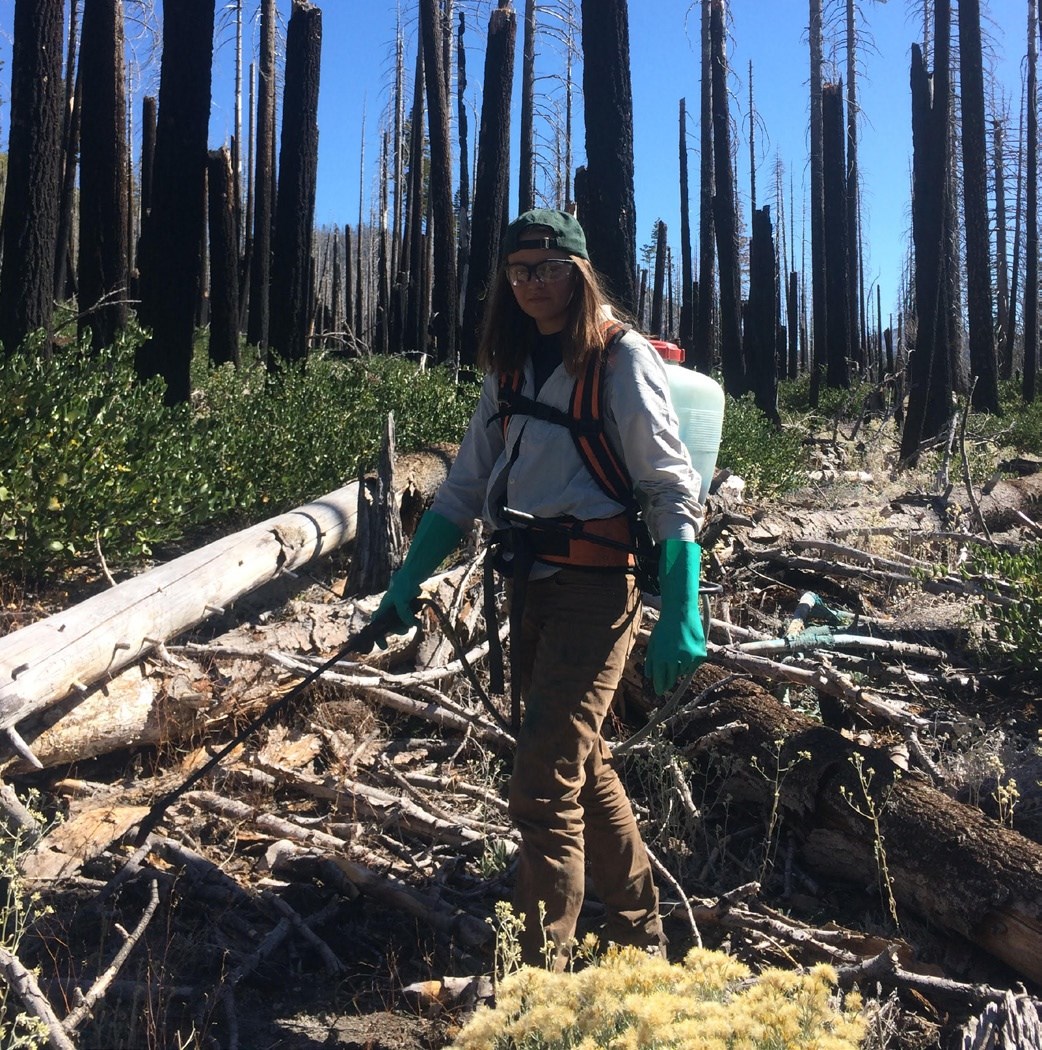Last updated: February 27, 2019
Article
Managing Bull Thistle in Disturbed Areas of Lassen Volcanic National Park

NPS Photo
“It’s like a big game of whack-a-mole.” Steve Buckley, an ecologist and botanist at Lassen Volcanic National Park in northern California, describes the fight against bull thistle in the wake of the Reading Fire from 2012.
The Reading fire, caused by a lightning strike, originally impacted a small area in the park and was being monitored by fire management staff for resource benefit. However, the fire quickly grew in size and severity because of an overwhelming volume of ground fuel that accumulated from over 100 years of fire suppression and an old-growth forest with plenty of vertical fuels. The fire escaped the boundaries onto the adjacent Lassen National Forest, and ultimately covered 28,079 acres. The hot, fast-moving fire burned all the existing ground fuel and ‘shattered’ trees at their bases, causing them to fall and drop to the forest floor. As a result, the ground fuel load, or the amount of dead material on the ground that could burn, has increased since the Reading Fire. This altered landscape provides a great setting for hardy invasive plant species to disperse and establish, outcompeting native plants that often take longer to establish on scorched earth.
“Four years out [from the fire], we saw a spike in the growth of bull thistle [on disturbed lands],” Buckley reflects.
The Reading fire, caused by a lightning strike, originally impacted a small area in the park and was being monitored by fire management staff for resource benefit. However, the fire quickly grew in size and severity because of an overwhelming volume of ground fuel that accumulated from over 100 years of fire suppression and an old-growth forest with plenty of vertical fuels. The fire escaped the boundaries onto the adjacent Lassen National Forest, and ultimately covered 28,079 acres. The hot, fast-moving fire burned all the existing ground fuel and ‘shattered’ trees at their bases, causing them to fall and drop to the forest floor. As a result, the ground fuel load, or the amount of dead material on the ground that could burn, has increased since the Reading Fire. This altered landscape provides a great setting for hardy invasive plant species to disperse and establish, outcompeting native plants that often take longer to establish on scorched earth.
“Four years out [from the fire], we saw a spike in the growth of bull thistle [on disturbed lands],” Buckley reflects.

NPS Photo
With native seed banks diminished, fuel loads increased, and a looming threat of invasive species to the otherwise pristine Lassen system, land managers undertook proactive steps to prepare for a battle. Burned Area Rehabilitation (BAR) funded projects were initiated in Lassen Volcanic National Park to quickly support site stabilization and restoration efforts including monitoring, treating invasive plants, and sowing native seed. The staff at Lassen looked for additional funding beyond the five-year BAR ‘funding horizon’ to conduct more surveys and found it through the assistance of the California Exotic Plant Management Team (CA EPMT). The CA EPMT funded restoration operations and removal of invasive plants. Buckley and others from the park are actively working to harvest local native seed and increase native seed supply through local and regional seed growers. Park staff will spread native seed in areas of the park where invasive plant treatments have been conducted.
“Success in the short term means that we’re treating what we can… teams are removing a lot of plants,” Buckley points out, “but it’s important to ask where we want to be in 15 to 20 years… we need to keep inter-generational management in mind.”
Buckley explained that he’s most proud of the “success in the improvement of knowledge and the expanding partnerships we’re pursuing” to help restore park ecosystems. In the short term, he looks forward to working with nurseries in Oregon and collecting native seed to catalyze early native restoration. In 10 to 15 years he hopes to see natural succession, facilitated by active restoration activities, phase out the invasive thistle across the Lassen system. For now, National Park Service staff have surveyed 21,000 acres, treated 465 acres, and will keep the fight going.
